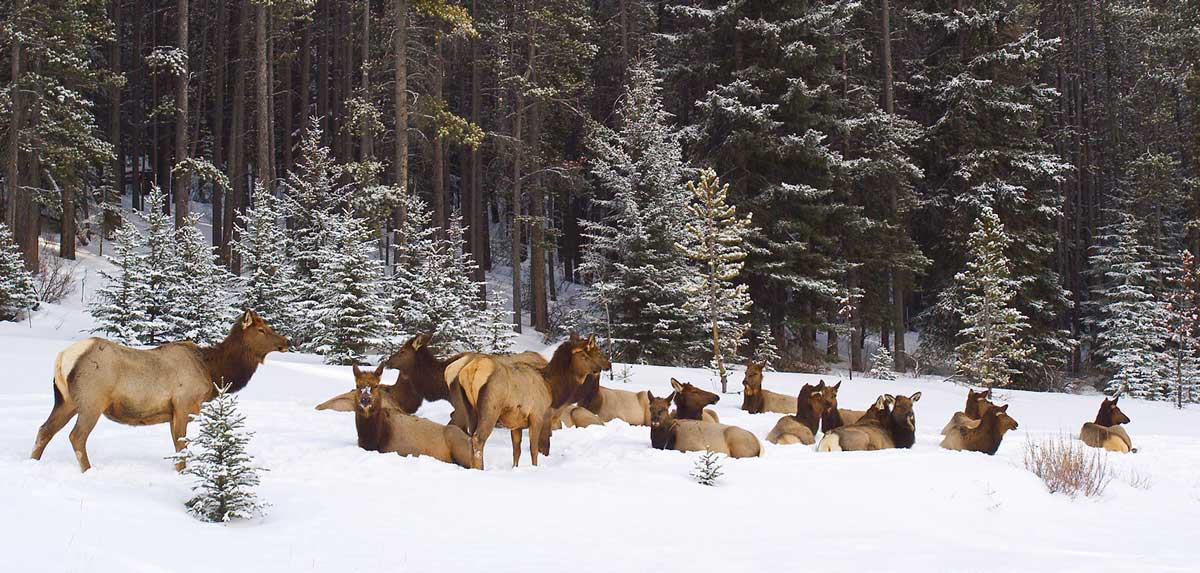The amount of snow required to push elk to lower elevations varies from herd to herd and even elk to elk. Two feet seems to be the threshold where large groups begin to at least consider migrating downhill toward easier and more abundant forage. In Montana, biologists have noted mature Rocky Mountain elk are able to move without major difficulty in loose snow up to 3.3 feet deep. More than 4 feet, though, hinders their ability to move freely and quickly.
As with all things elk, there are exceptions to the rule. Montana Fish, Wildlife and Parks wildlife biologist Brent Lonner keeps tabs on elk that descend from the Bob Marshall Wilderness onto the Sun River Game Range west of Augusta. In what can be an incredible spectacle, some 3,000 elk pour from the mountains in late fall through a narrow canyon, sometimes in a matter of hours.
Yet Lonner says he has witnessed this migration happen with less than 6 inches of snow blanketing the high country, but amid subzero temperatures and high winds. He has also seen bulls that refuse to migrate from the high country, choosing instead to reside where they feel secure and scratch out a living up on a bare minimum of forage.
Roosevelt’s bull elk, on the other hand, have been documented to linger in snow depths of 5 to 6 feet on the Olympic Peninsula in Washington. None of this will come as a surprise to most hunters, though. In late seasons, the biggest bulls on public land are often killed in multiple feet of snow, while cows and calves tend to seek more manageable depths of 2 feet or less.
